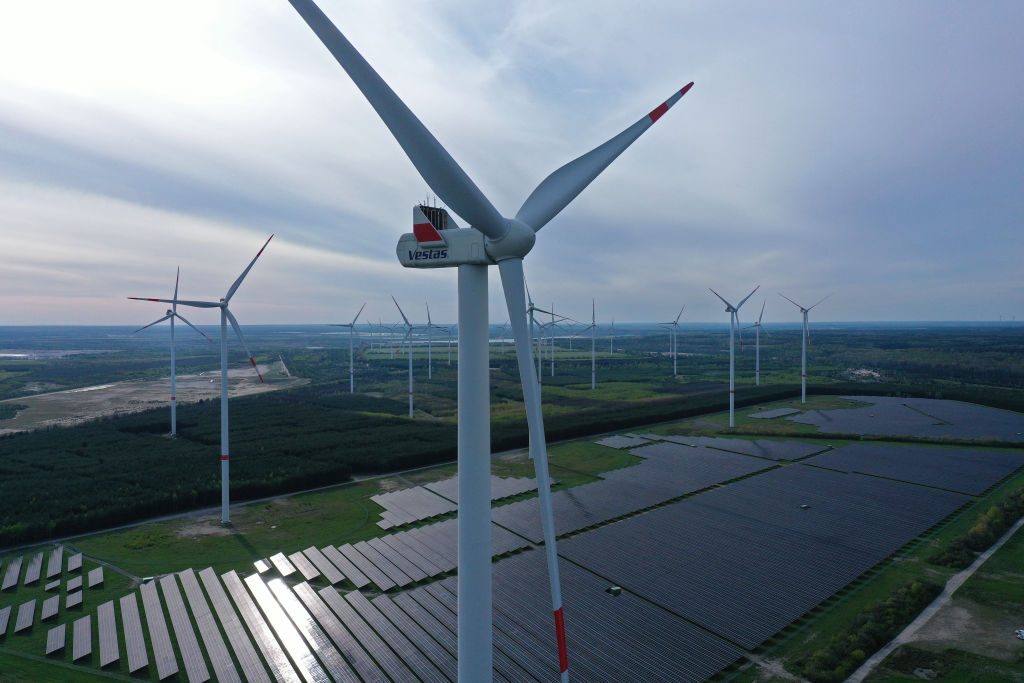The world’s carbon dioxide emissions continue to rise, but the share of electricity generated with the help of solar and wind is steadily increasing, now making up 12 percent of the global mix. Nuclear’s share has declined to 9 percent. This is evident from the latest annual figures from the Energy Institute.
In 2022, wind power will account for 2,105 TWh worldwide and solar power 1,323 TWh, according to the Energy Agency. A TWh, a terawatt hour, a billion kilowatt hours. Sweden produces approximately 170 TWh annually and consumes approximately 135 TWh.
Since the climate conference in Paris in 2015, wind power has increased by 417 percent and wind power by 153 percent. At the same time, it is clear that global carbon dioxide emissions from fossil fuels will increase by 0.9 percent by 2022.
Global oil consumption increased by 3 percent on the year, but overall consumption was higher in 2019 than before the pandemic. In the European Union, oil consumption increased by 3.5 percent. At the same time, gas consumption globally decreased by 3 percent (13.5 percent within the EU), and coal consumption by 0.2 percent (4 percent within the EU).
But without increased electricity from the sun and wind, fossil emissions would have been higher. For every fossil-free TWh, emissions are reduced by half a million tons of carbon dioxide.
Emissions can be reduced
It is clear that with more electricity from solar and wind, the emissions curve will begin to shift downward. Total global carbon dioxide emissions have increased by an average of 0.6 percent from 2012-2022, so it doesn’t need much.
The Energy Institute, whose annual figures were released earlier by oil giant BP, did not make projections, but found that emissions curves in the EU, US, UK and Japan had already turned downward. Carbon dioxide emissions have been steadily rising in China and India for a long time.
At the same time, China, for example, is part of the problem and part of the solution. China accounts for 31 percent of the world’s carbon emissions and nearly half of the world’s coal-fired power.
But China also has the largest wind energy capacity (763 TWh), far behind the second-placed US (439 TWh). China is also the largest producer of solar power (428 TWh) second only to the US (206 TWh).
China produces all the solar cells for other countries and exports a lot of components for wind power.
Notably, solar and wind power are also on the rise in Vietnam, which had no solar power in 2017.
Other non-fossil energy sources
Other renewable sources are a combination of biomass from thermal springs, wave power and electricity. In 2022, all these produced significantly less electricity (777 TWh) than solar (1323 TWh) and wind (2105 TWh). And they grow very slowly.
Hydropower, which the Energy Agency doesn’t consider renewable energy, is huge but not growing as fast as solar and wind. It is a limited resource that often creates conflicts with, among others, biological diversity.
Nuclear power is phased out by 2022. Due to this coincidence, many French reactors are closed for repairs, but nuclear power is also being phased out, for example, in Germany, Belgium and Taiwan. In the United States and Great Britain, many reactors are being shut down for reasons of age.
According to Energy Agency figures, nuclear power’s best year was 2006, when it produced 2,803 TWh, nearly 15 percent of the world’s electricity. By 2022, this had dropped to 2,679 TWh, accounting for more than 9 percent of the world’s electricity.
Over the same period, since 2006, wind power has increased from 134 to 2,105 TWh, and solar has increased from 6 to 1,323 TWh. As stated, the Energy Institute does not make forward-looking statements, but their historical data seems to provide a glimpse into the future.
Sweden has a lot of sun and wind
In Sweden, the Energy Agency’s latest programs Short term forecast By 2025, wind and solar power will clearly outpace nuclear power.
Wind power generation of 33.1 TWh in 2022 is expected to increase to 49.2 TWh in 2025. Solar power generation is expected to increase from 2.0 TWh in 2022 to 5.4 TWh in 2025.
Together they will provide 54.6 TWh. Nuclear power is expected to produce 51.7 TWh in the same year.
The forecast for 2026 is even more promising. Then the Energy Agency says solar and wind combined will generate 59.5 TWh, while the nuclear forecast is the same figure for 2025: 51.7 TWh.
Hydropower is undeniably a major generator of electricity: and is expected to provide 66.4 TWh each year. The forecast indicates a huge Swedish export surplus for electricity in 2025-2026: 45-46 TWh, which corresponds to more than five of the six reactors Sweden has in operation.

“Passionate beer ninja. Extreme problem solver. Thinker. Professional web fan. Avid communicator. Hardcore troublemaker.”







More Stories
Mockingly mocking in the UK is illegal
Harvesting early and small peas in Britain
Saab is supplying the British Army with a new generation of Arthur radar